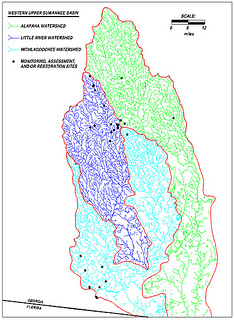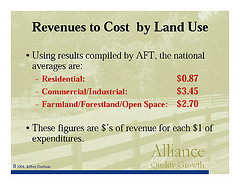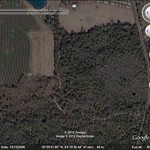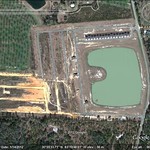Want jobs, low taxes, and less flooding? Help maintain our watersheds with good local planning.
What’s a watershed? Kaid Benfield wrote for Atlantic Cities today, The Cost of Sprawl on Clean Water:
Watersheds are topographic areas where all the rain that falls eventually ends up in a namesake steam, river, lake, or estuary.
 These are our local watersheds. Purple is the Little River Watershed, blue is the Withlacoochee Watershed, and Valdosta is where the Little River flows south into the Withlacoochee. Green is the Alapaha watershed, and Tifton is where all three meet. Every drop of rain or used well water or wastewater overflow or pesticide runoff or soapy shower water or clearcut mud that runs downhill into one of these rivers is in their (and our) watersheds.
These are our local watersheds. Purple is the Little River Watershed, blue is the Withlacoochee Watershed, and Valdosta is where the Little River flows south into the Withlacoochee. Green is the Alapaha watershed, and Tifton is where all three meet. Every drop of rain or used well water or wastewater overflow or pesticide runoff or soapy shower water or clearcut mud that runs downhill into one of these rivers is in their (and our) watersheds.
Becoming greener doesn’t just mean a municipality’s adding a pleasant new park here and there, or planting more trees, although both components may be useful parts of a larger effort. How a town is designed and developed is related to how well it functions, how well it functions is related to how sustainable it really is, and how sustainable it is, is directly related to how it affects its local waters and those who use those same waters downstream.
Compact, mixed-use, well-designed in-town growth can take some of the pressure off of its opposite on the outskirts — or beyond the outskirts — of towns and cities. We know that sprawling growth is generally pretty bad for maintaining environmental quality in a region (air pollution from cars that become necessary in such circumstances, displacement of open land, water pollution from new roads and shopping centers that are begot by such growth patterns).
 We also know, as UGA Prof. Dorfman told us several years ago,
We also know, as UGA Prof. Dorfman told us several years ago,
Local governments must ensure balanced growth, as
sprawling residential growth is a certain ticket to fiscal ruin*
* Or at least big tax increases.
Kaid Benfield explains how town planning is related to watersheds:
Getting neighborhood design right means creating safe and walkable
streets, which make access and movement easy and pleasant. It means providing for different densities and price points for housing, and creating close commercial destinations that supply daily needs. And it means the thorough integration of green-space that serves a variety of purposes (active and passive parks and greenways, street greenery, vegetated buffers along streams, and stormwater management on parking lots, rooftops, in lawns and gardens and storefronts, and along streets).
All of these disparate objectives together unite town form with function. In this way, the things that make cities and towns better places in which to live and work are, it turns out, also pretty good for local waterways and their larger watersheds.
Conversely, as we all discovered in 2009, poor planning makes for a 700 year flood. Turning swamps into concrete ponds, cutting down forests, and paving over too many acres has its consequences.
Eventually this sort of thing can have adverse effects:
Sprawl contributes to flooding and pollution, for example from flooded wastewater plants, and costs local governments money they cannot recover in taxes; money spent on longer trips for fire trucks, sheriff, ambalances, and especially for school busses.
Dense development close to existing services, with green spaces, preserving farmland and forests, helps keep local governments solvent, keeps taxes down, prevents flooding and pollution, and, as Dr. Dorfman noted:
- If green spaces contribute to quality of life, you attract people and jobs to community
- Sociologists are finding that today more and more high skill workers are choosing where to live first, then finding jobs.
- Because businesses want high skill workers, they follow these workers to places with good quality of life.
- If you attract good workers, good jobs follow.
Good workers, like those we graduate from local high schools and colleges, currently go elsewhere for jobs. If our community became the one they chose to live in, because of a good quality of life, including a healthy watershed, employers would seek to locate here for the same reasons and more; good quality of life, well trained workforce, and an overall healthy environment.
-jsq
Short Link:


